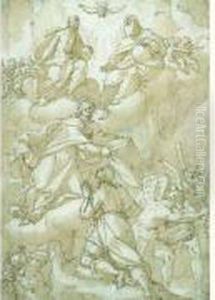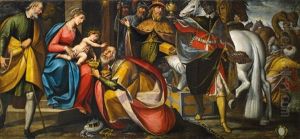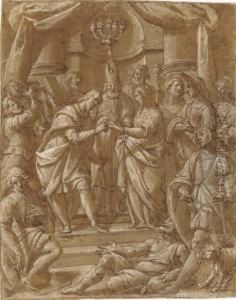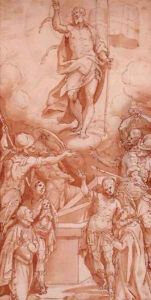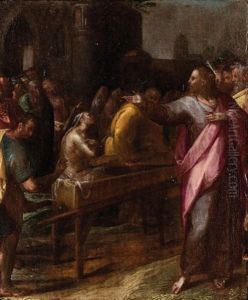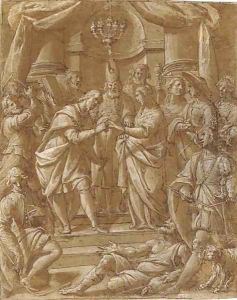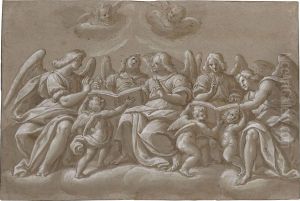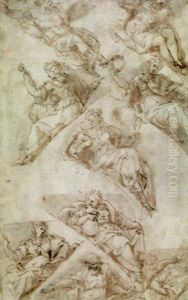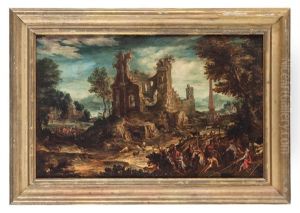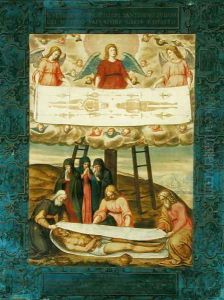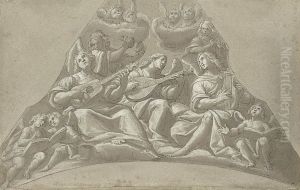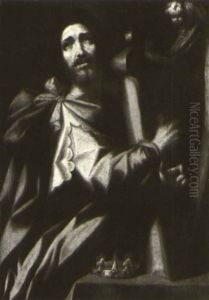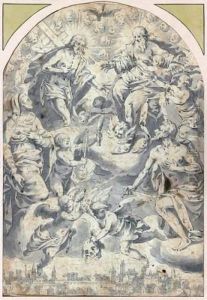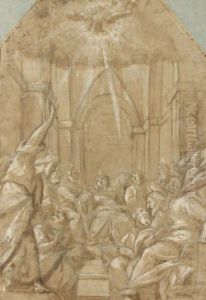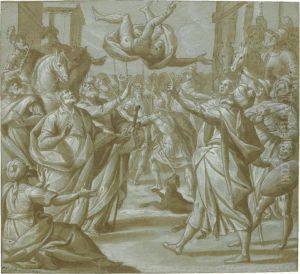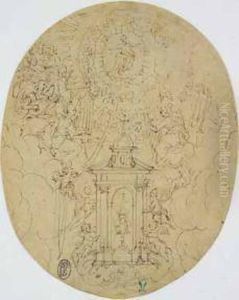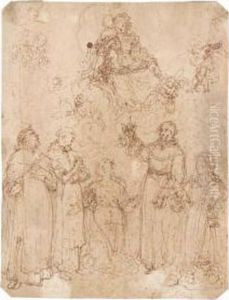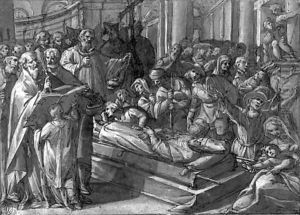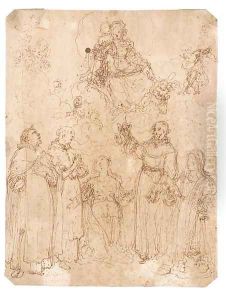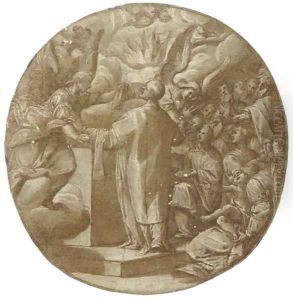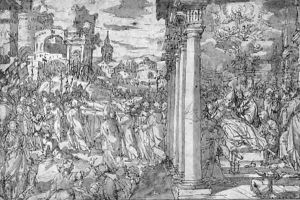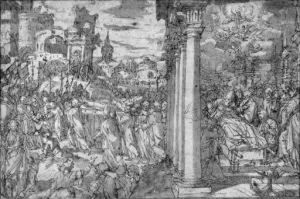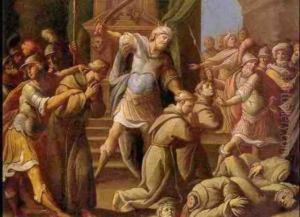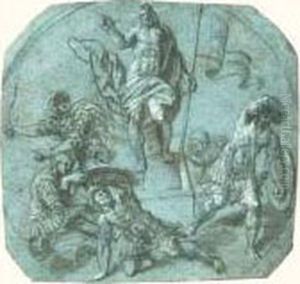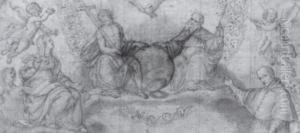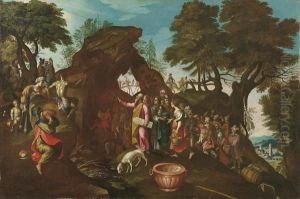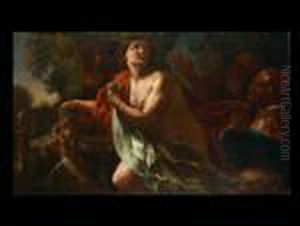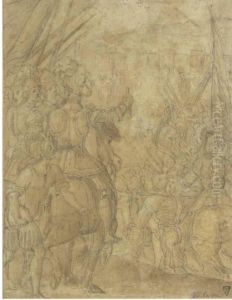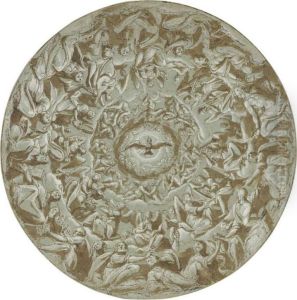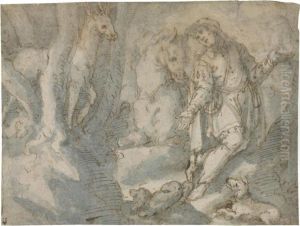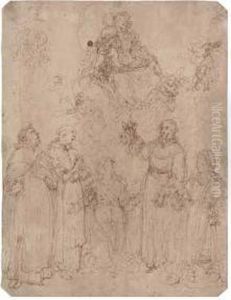Giovanni Battista della Rovere Paintings
Giovanni Battista della Rovere was an Italian painter of the late-Renaissance period, active mainly in Milan. He is also known as Giovanni Battista Milanese or il Fiammenghino due to the influence of Flemish artists on his style. His exact birth date is not documented, but he is believed to have been born in the latter half of the 16th century.
Giovanni Battista della Rovere belonged to a family of artists; he was the brother of Girolamo della Rovere, who was also a painter. Together, they were part of a workshop that was well known in Milan at the time. Their work is often associated with the Mannerist style, which followed the High Renaissance and was characterized by its complex compositions, elongated figures, and artificial effects of light and shadow.
Della Rovere’s works included religious subjects, such as altarpieces and frescoes for churches, as well as decorative schemes for noble residences. He collaborated with other artists on various projects; for example, he worked with his brother and other painters on the frescoes for the Sacro Monte di Varallo, a complex of chapels in Piedmont, Italy, which is a UNESCO World Heritage Site.
One of his significant contributions is the decoration of the church of San Vittore al Corpo in Milan, where he painted a series of frescoes. His style shows a blend of influences, including the Lombard tradition and elements drawn from Flemish painting, which was known for its detail, use of light, and naturalistic representation of materials and surfaces.
Giovanni Battista della Rovere's work was respected in his time, and he contributed to the spread of Mannerist aesthetics in Northern Italy. However, his legacy is somewhat overshadowed by more prominent artists of the era, and as a result, his life and work have not been as extensively documented as those of some of his contemporaries. He is thought to have died around 1620, and his works remain valuable examples of the transition from Renaissance ideals to the more expressive and dynamic Mannerist approach.
